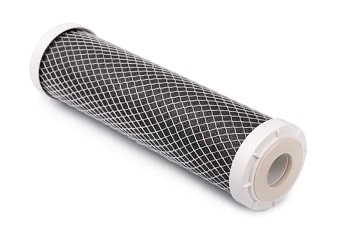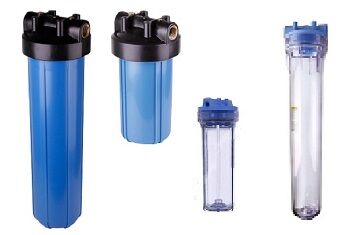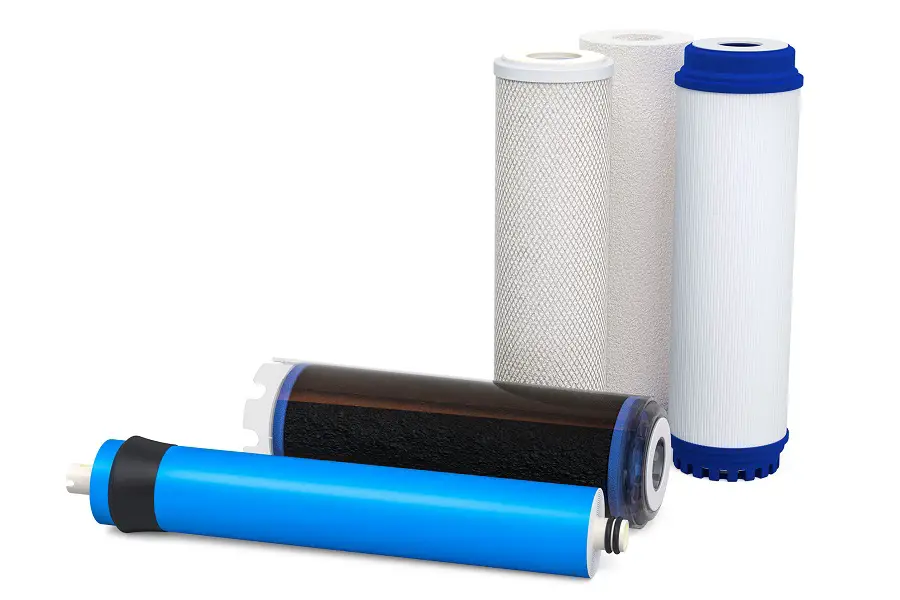If you get the water for your home from a municipal water supply, your water is most likely disinfected by your water supplier using chlorine. You know that chlorine does a great job at disinfecting your water, but can chlorine do any damage to your reverse osmosis system?
Chlorine can damage the membrane of a reverse osmosis system overtime because chlorine will corrode and weaken the mesh of the membrane causing the size of the openings in the mesh to get larger. Most reverse osmosis systems have a carbon pre-filter to remove chlorine before it reaches the membrane of the system.
Having a reverse osmosis drinking water system is great for providing you and your family with high-quality drinking water, but if your water is treated with chlorine to disinfect the water, that chlorine could cause your reverse osmosis system to provide water that is much lower quality than you might think!
How can chlorine damage a reverse osmosis system?
It’s not so much that chlorine will ruin the entire reverse osmosis system, but it certainly can ruin the reverse osmosis membrane which is the primary filtering part of the whole reverse osmosis system.

Chlorine is a very corrosive substance that can eat away at the material that is used to make a reverse osmosis membrane.
If the reverse osmosis membrane gets damaged due to prolonged exposure to chlorine, the openings in the membrane can deteriorate and become larger than they are supposed to be.
When this happens, the membrane will not be able to reject all of the impurities that it is designed to.
To put it another way, it won’t be filtering out what it should be and your water will not taste as good as it should.
Chlorine can also damage other filters in your reverse osmosis system if they are at all susceptible to corrosion from caustic chemicals. Orings and any other rubber seals can deteriorate over time from prolonged exposure to chlorine if they are not chlorine resistant.
Chlorine can also corrode the inside of your reverse osmosis faucet overtime if your reverse osmosis system is not removing the chlorine using activated carbon filters.
If you have chlorine in the tap water that supplies your reverse osmosis system, it must be removed by an external activated carbon filter or by an activated carbon pre-filter within your reverse osmosis system before it makes contact with the reverse osmosis membrane or the membrane will lose its ability to filter your water properly.
How can I protect my reverse osmosis system from chlorine damage?
The most common and economical way the remove chlorine from your water is by the use of a carbon-based filter that traps the chlorine within the pores on the surface of the carbon, leaving your water free of chlorine.

Most reverse osmosis systems already come with an activated carbon pre-filter for chlorine removal as well as a pre-filter for sediment in the water.
So if you are considering getting a reverse osmosis system for your home and have water that is supplied by a municipal water supplier, make sure to get a reverse osmosis system with an activated carbon pre-filter to protect the membrane of the system.
A second option would be to have a larger activated carbon whole house filter for the removal of chlorine from your water for your entire home which would protect your plumbing and water fixtures from damage that can be caused by chlorine in your water.

This would not only protect your reverse osmosis system from chlorine damage, but it would also reduce that swimming pool smell that comes from having chlorinated water running throughout your home.
What can be done if chlorine has damaged my reverse osmosis system?
First of all, if your reverse osmosis membrane has been ruined because of prolonged exposure to chlorine, it will need to be replaced.
This is not a difficult thing to do, but you should wear rubber gloves when changing a reverse osmosis membrane because the oils in your skin can also cause damage to the membrane material.
In addition to replacing the membrane of your reverse osmosis system, you should make sure to replace all of the filters that are used in your reverse osmosis system. Just changing the membrane could lead to damage of the new membrane if the membrane is not protected by an activated carbon pre-filter.

If your reverse osmosis system does not have an activated carbon pre-filter, or you have a high level of chlorine in your water, you might consider using a whole-house activated carbon filter to reduce the chlorine in the water for your whole house.

